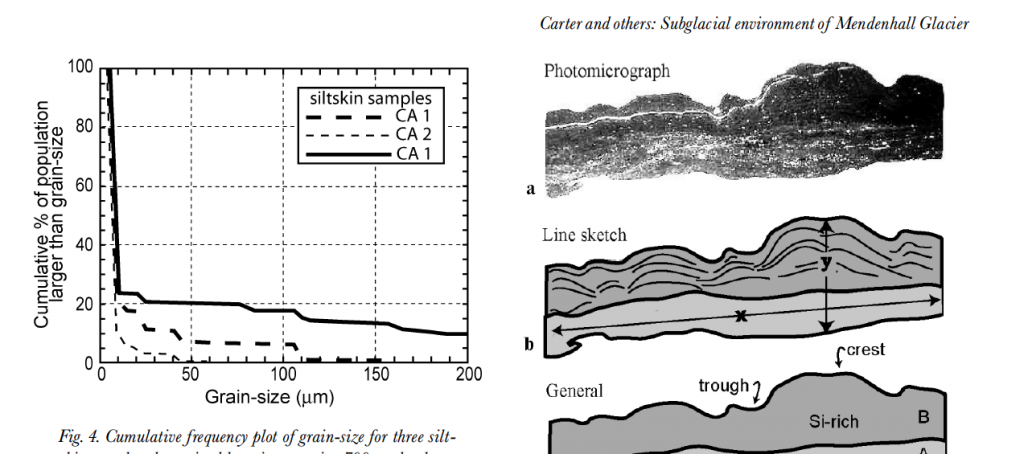The landscape revealed by retreating glaciers provides evidence, much of it ephemeral, for subglacial processes that are difficult to observe directly. Glaciers that thin over rough bedrock surfaces continue to slide by regelation as adjacent subsurface cavity systems develop and enlarge. Subglacial deposits, including the cemented coatings we describe here, provide insight into subglacial conditions.
Rock-coating, carbonate-cemented lithic deposits (siltskins) that we describe from Mendenhall Glacier, Alaska, U.S.A., record processes that were active under ice that has been thinning and retreating since the Little Ice Age. Such processes may be relatively common near the margins of the thousands of glaciers that are retreating worldwide as climate continues to warm. Subglacial deposits provide important clues about how glaciers are affected by and record changing climate and how they have contributed to global climate change throughout Earth history (Paterson,1994).
[issuu layout=http%3A%2F%2Fskin.issuu.com%2Fv%2Flight%2Flayout.xml showflipbtn=true documentid=101121152924-1c2bc56ee2e043fa8e0bfef314d664a1 docname=carter_dethier_newton_siltskins username=snowflyzone loadinginfotext=Subglacial%20environment%20inferred%20from%20bedrock-coating%20siltskins%2C%20Mendenhall%20Glacier%2C%20Alaska%2C%20U.S.A. showhtmllink=true tag=subglacial width=600 height=425 unit=px]



 I am an experience designer, artist, and geologist.
I am an experience designer, artist, and geologist.